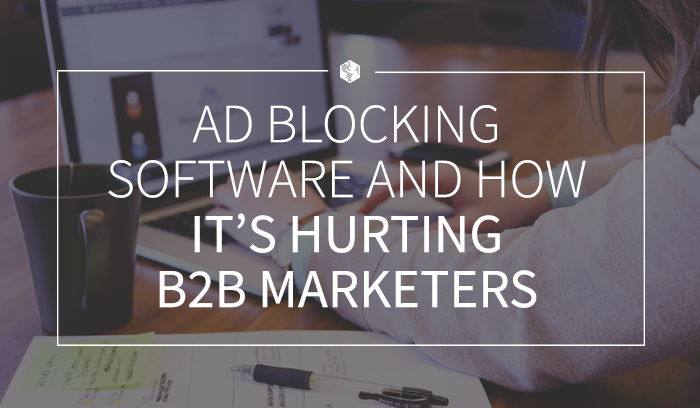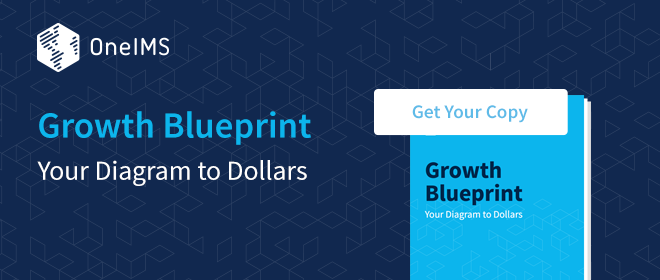Table Of Contents
Are you investing in paid ads for your B2B company, but concerned about ad blocking undermining your efforts?
If so, you have good reason, as this was one of the top challenges identified by B2B marketers in 2016. We’re seeing the use of ad blocking software continue to grow, and in 2017, 32% of internet users are expected to be blocking ads.
Thankfully, there are actions you can take to overcome the problem of ad blocking. Diversifying your marketing channels and providing quality ad experiences are some of the major strategies you can employ.
Don’t worry if you’re unsure about where to start. This article will explain what ad blocking software is and why it’s hurting B2B marketers. We’ll then provide a step-by-step guide to help you overcome your ad blocking challenges.
Key Takeaways
- Ad blocking software usage is on the rise and is posing a huge challenge to B2B marketers.
- It’s important that marketers take action to mitigate the effects that ad blocking has on the cost of advertising.
- By evaulating your strategy, diversifying your marketing channels, and improving ad quality, you can overcome many of the threats posed by ad blocking.
What Ad Blocking Software is (and Why It’s So Popular)
Ad blocking software is just what it sounds like—technology used to block the display of online advertisements.
Why are people using this software? Studies have shown the primary reasons include increasing privacy, reducing distractions, and improving page load times. And while internet users may be reaping benefits, marketers and publishers are facing some serious challenges.
Why Ad Blocking is Hurting B2B Marketers
In many cases of ad blocking, the ad isn’t shown and doesn’t register as having been served. While this doesn’t pose an immediate cost to advertisers, mass use of ad blockers lowers the overall reach for marketers. In turn, the number of click-throughs is reduced, increasing costs per click or impression.
In worse cases, both the website and ad are served but the ad is hidden. This means your ad could be reported as having been served without the possibility of anyone seeing it.
While neither of these are good scenarios, the second means you’re paying for impressions which are never delivered. As you can see, both instances can be taxing on the budget, so lets look at how to overcome them.
Steps to Overcome Ad Blocking Challenges
In this section we’ll outline the three steps you need to take to protect your advertising dollars. Let’s get started!
Step #1: Evaluate Your Current Ad Strategy
The first thing you need to do is benchmark your current ad performance and audience sentiments. By doing so, you can find out if you’re taking a hit from ad blocking.
Check your performance by looking at your ad analytics to see your results over the past two years. Has your return on investment grown, plateaued, or worse, dropped? You should also survey your customers to find out how they feel about your ads. Ask them if they find them helpful and if they would like to see more.
There are ways to find out how many ads are being blocked, and many new companies are offering services to help detect ad blocking activity (PageFair is one of the industry leaders). However, a recent report by competitor Streamwize shows that, although PageFair is considered an authority, they are only detecting 20% of blocked ads.
Clearly, there is some uncertainty in the industry. If your results are showing declining returns, you can contact your publisher to ask how they are handling ad blocking. While some publishers make it a priority to deliver a good experience to marketers, such as Google (who prioritizes only counting actual human views), others don’t. If you’re unsure who to trust, Hubspot has compiled a list of reputable publishers, which can serve as an excellent starting point.
Step #2: Invest in Omnichannel Digital Marketing Techniques
If you’re struggling with paid ads and not seeing the ROI, it’s probably time to diversify and increase your marketing efforts in other areas. Digital marketing should be an integration of various channels that support each other. Here are a few other opportunities:
- Native Advertising: Native advertising is a strategy where articles are written by a brand who pays to have them displayed on a publisher’s site. The advertising is blended with editorial content and satisfies the desire of the consumer to read engaging content. This tactic is growing and, interestingly, 77% of consumers in a recent survey said they don’t even identify native ads as an advertisement. This concept has also been introduced to social media, where you can place native ads that blend in with other content.
- Product Placement: With product placement, you integrate your product or service into some other form of entertainment. We have seen this take off with influencer marketing on various social media channels. You partner with a popular personality who incorporates your product or service into their content. There are lots of tools available to help B2B companies find influencers.
- Inbound Marketing: Inbound marketing is about pulling traffic to your site, instead of pushing content out to your audience. Every B2B company should be investing in this kind of strategy which includes a blog, social media presence, web pages with valuable content, and SEO. You can use each channel to support the others. This allows you to build credibility and visibility in your industry that won’t ever be blocked.
By diversifying your digital marketing efforts, and investing in channels that are growing, ad blocking will become less of a concern.
Step #3: Audit Your Ads for Quality
What if you are still getting decent results from your ads? Since there are still many people who are not using ad blocking software, they can provide ROI as part of your online marketing strategy, at least for the time being. However, your ads need to put the user experience first.
IAB and EY found in a recent study that quality issues, such as those associated with ads, cost the US digital advertising industry $8.2 billion dollars per year. Furthermore, when looking at why people use ad blockers, based on research from Hubspot, the number one reason is that they find ads annoying and intrusive. 
As marketers, we can control the quality and relevance of ads so they are not seen as annoying, intrusive, disruptive, offensive, or data-heavy.
How? By using all of the data we can get our hands on to get a better understanding of the customer and where they are in the buying cycle. This includes data collected on-site, off-site, and offline, which can be used to plan ad strategies with the full picture of the customer in mind.
By taking steps to put your customer’s overall ad experience first, you can discourage your audience from wanting to download an ad blocker in the first place.
Conclusion
One thing is for sure—no B2B company wants to waste their marketing dollars. With that in mind, it’s important to be aware of the current ad blocking trends and the actions you can take to protect your bottom line.
While display advertising is under threat, it’s not dead yet. By following the steps in this article, you can take advantage of the benefits available without putting your company at risk. Let’s recap them quickly:
- Evaluate your current ad strategy.
- Invest in omnichannel digital markteing techniques.
- Audit your ads for quality.
Do you have any questions about ad blocking or building your digital marketing strategy? Let us know in the comments section below!
Photo Credit: coyot






